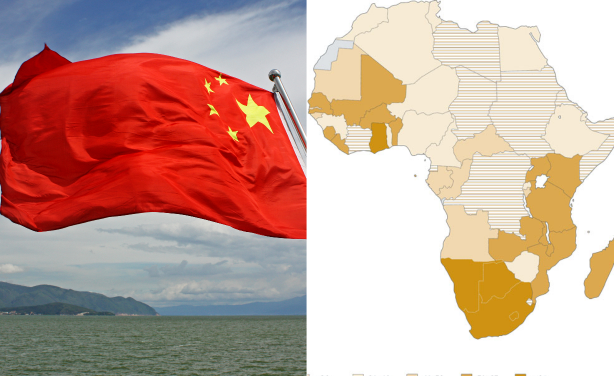
By Yunus Momoniat ~All Africa
In 2002 South Africa’s Parliament unveiled a digital reproduction of a map – of China, the Middle East and Africa – that some speculated could be the first map of the African continent. The Da Ming Hun Yi Tu – the Comprehensive Map of the Great Ming Empire – was drawn up around 1389 during the Ming Dynasty, according to historian Hyunhee Park.
Park published Mapping the Chinese and Islamic Worlds, a book on cartography and the history of contact between China and the Islamic world from 700 to 1500 AD, in 2012. She reveals that Vasco da Gama, the first Westerner to round the Cape, was only able to reach India because his navigator, a Muslim from Gujarat in India, knew the routes.
Park says it was from Arab maps that Chinese cartographers developed their picture of the world, and maps of Africa existed before 1389. China’s relationship with Africa stretches back centuries – as far back as 138 BC says historian Li Anshan, who researches Sino-African relations. Anshan and Park are among very few in this emerging field, disabusing us of notions of China’s supposed ancient isolation.
Anshan writes that indirect knowledge of Africa and trade with Egypt began during the Han Dynasty (206 BC to 220 AD). Trade between China and parts of Africa developed from then and intensified during the Tang Dynasty (618 to 907 AD), when China’s knowledge of Africa came from direct contact with the continent.
Contact between Africans and Chinese became more frequent after 900 AD and by the early 14th century, according to historian John Iliffe, “the international trading system stretching from Flanders to China, with Cairo at its core, was breaking down as the Mongol Empire disintegrated in Central Asia, leaving Egypt as a channel through which oriental goods passed to the increasingly dominant economies of Europe”.
In 750 AD the Chinese did not have maps of the Islamic world, which included East Africa, says Park, but by 1500 both regions had produced quite detailed maps of each other’s territories. Both Arab and Chinese maps tended to depict Africa as triangular.
Some of the works of Jia Dan (730-805 AD), a scholarly official who enjoyed studying geography, have been preserved, and these describe a sea route from Guangzhou to the Persian Gulf via East Africa, a journey of six or seven weeks.
Between 1050 and 1150 China’s imports of African goods increased tenfold, according to Iliffe. From the east coast of Africa, ivory was the main export to eventually reach China.
But a more ominous aspect of these exchanges was slavery. Many East Africans were taken to China by Arabs as slaves, and were described by the locals as “devil-slaves”, “wild men”, or “barbarian servants”, according to Anshan, and were treated “like beasts”.
Much of our knowledge of Sino-African relations comes from official Chinese records. A compilation of these was made by the scholar Chang Hsing-lang (1888-1951), titled Communication between Ancient China and Africa, and published in 1962. Archaeological evidence has also brought agreement among scholars. Stone paintings discovered in China in 1979 depict a giraffe. Tang pottery and coins found in Africa present the most direct evidence of Sino-African trade, and Tang clay figurines and paintings of Africans have been found in China.
More than 2000 examples of Tang artefacts were found at an archaeological site in Fustat, a southern suburb of Cairo that had become a centre for politics, commerce and pottery. Other artefacts were found in the Aizhabu port in northern Sudan, and Kenya’s Manda Island. Tang coins have also been unearthed in Zanzibar and Mogadishu.
It was the Mongols’ rule over China, Iran, Baghdad and other regions that made increased contact possible. The Mongols under Kublai Khan established the Yuan Dynasty, which lasted from 1271 to 1368. Their cosmopolitan outlook allowed foreigners to settle in China, and encouraged the Chinese to embark on overseas travels.
Read the entire story here.



